A REALTOR ON THE PARK SLOPE (1885)
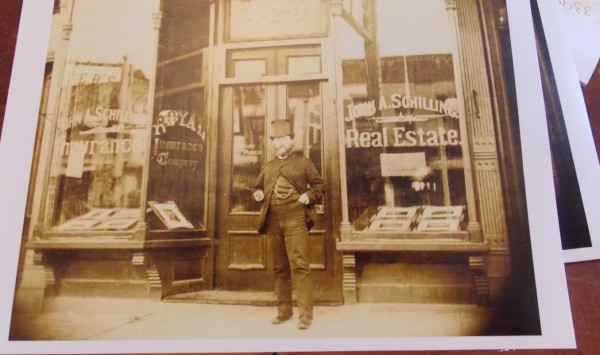
******************************************************************************************************************************** Brownstone Detectives investigates the history of our clients’ homes. The story you are about to read was composed from research conducted in the course of one of those investigations. Do you know the history of YOUR house? ******************************************************************************************************************************** In 1885, Park Slope was still expanding at a rapid clip; houses were being built and sold to those members of a future Brooklyn elite who were then moving from Manhattan across a recently completed Brooklyn Bridge. Enter John A. Schilling of 429 5th Avenue (btwn 8th and 9th streets), who cared for all of Prospect Park Slope’s realty and insurance needs. Schilling appears to have been at the Fifth Avenue location from 1882 through at least 1894, at which time, probably due to the Panic of 1893, the real estate market dried up. These bad economic times, which lasted most of the decade, would force him to go out of business and sell his office – after which he would seek other employment. With his Republican political connections, and the fact that another German, Republican Charles A. Schieren, had just been elected mayor of Brooklyn, that work came in civil service positions which had him working for various Brooklyn city agencies. Schilling was also a Civil War veteran, which was common for men his age living in Park Slope during the period. When Schilling passed in 1910 on Montague Terrace in Brooklyn Heights, he was memorialized in the press as “very popular among his associates.” Follow @BrownstoneDetec Share ———————————————————————————————————————– The […]
JACK THE RIPPER IN BROOKLYN HEIGHTS (1889)
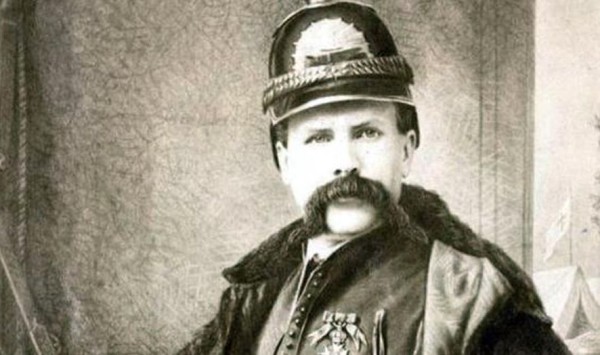
******************************************************************************************************************************** Brownstone Detectives investigates the history of our clients’ homes. The story you are about to read was composed from research conducted in the course of one of those investigations. Do you know the history of YOUR house? ******************************************************************************************************************************** The residents of Brooklyn Heights had always seemed to have much more to fear from one another than from the butcheresque stylings of London’s Jack The Ripper. His fiendish work had been performed with the great learnedness of a doctor, but, comfortingly, it had been executed all the way across the Atlantic in the East End of London. It was likely because of this distance that Brooklynites felt free to regale in the stories of the Ripper’s murders and to wonder at the identity of the modern-day butcher. On 18 January in 1889, however, all of that may have changed, when a man using the “common, every day” name Smith stepped up to a Brooklyn Heights boarding house – with his bag and great trunks en tow – and quietly checked himself in for a long stay. TWOMBLEY, THE INDIAN HERB DOCTOR The former “Indian herb doctor,” who had, through “judicious and extensive advertising, managed to make a handsome income,” engaged Mrs. Lamb’s rooms, where he also took his meals. Dr. Francis Twombley, also known as Tumblety, in his former life in the U.S. – for he was born and raised in the States – had, in the early 1860s, had an office and laboratory on Fulton Street, near Nassau. (According […]
IT’S RAINING CATS! HALLELUJAH! (1887)
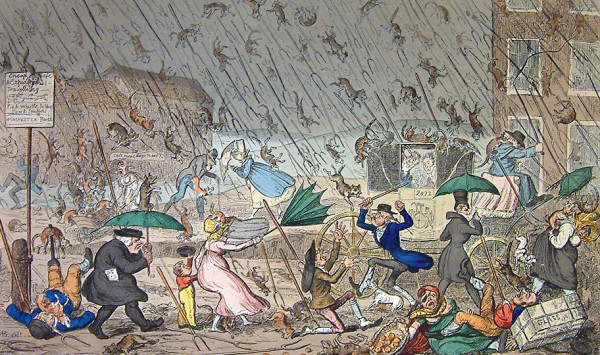
******************************************************************************************************************************** Brownstone Detectives investigates the history of our clients’ homes. The story you are about to read was composed from research conducted in the course of one of those investigations. Do you know the history of YOUR house? ******************************************************************************************************************************** It once rained cats on Grand Street. The felines were tossed and dropped rather dramatically from the rafters of a playhouse in Williamsburgh. When the Society For the Prevention of Cruelties to Animals got wind of the act, they decided to buy a ticket to the show, “Soap Bubble”… IT’S RAINING CATS…HALLELUJAH! In Williamsburg, in the late 1800s, there existed a show hall which sat in the middle of Grand Street between Bedford and Driggs avenues at No. 166. Known for a time as the Grand Street Museum, it had a run of only five years between 1885 and 1889. But the Museum made the papers in 1887, for a cruel cat storm that played out upon their boards… In the latter part of 1887, a show by the name of “Soap Bubble,” was making its debut in the district. Although it wasn’t creating much of a stir, it so happened that a letter about the show was received at the offices of the Society for the Prevention of Cruelty to Animals. The letter made a serious accusation, referring to “cruelty to cats” that was being “exhibited nightly” during the play. The writer, who noted he’d spent an evening at the theatre, stated that during the first act a “large number […]
CONEY’S 6 M.P.H. COASTER OF FEAR (1884)
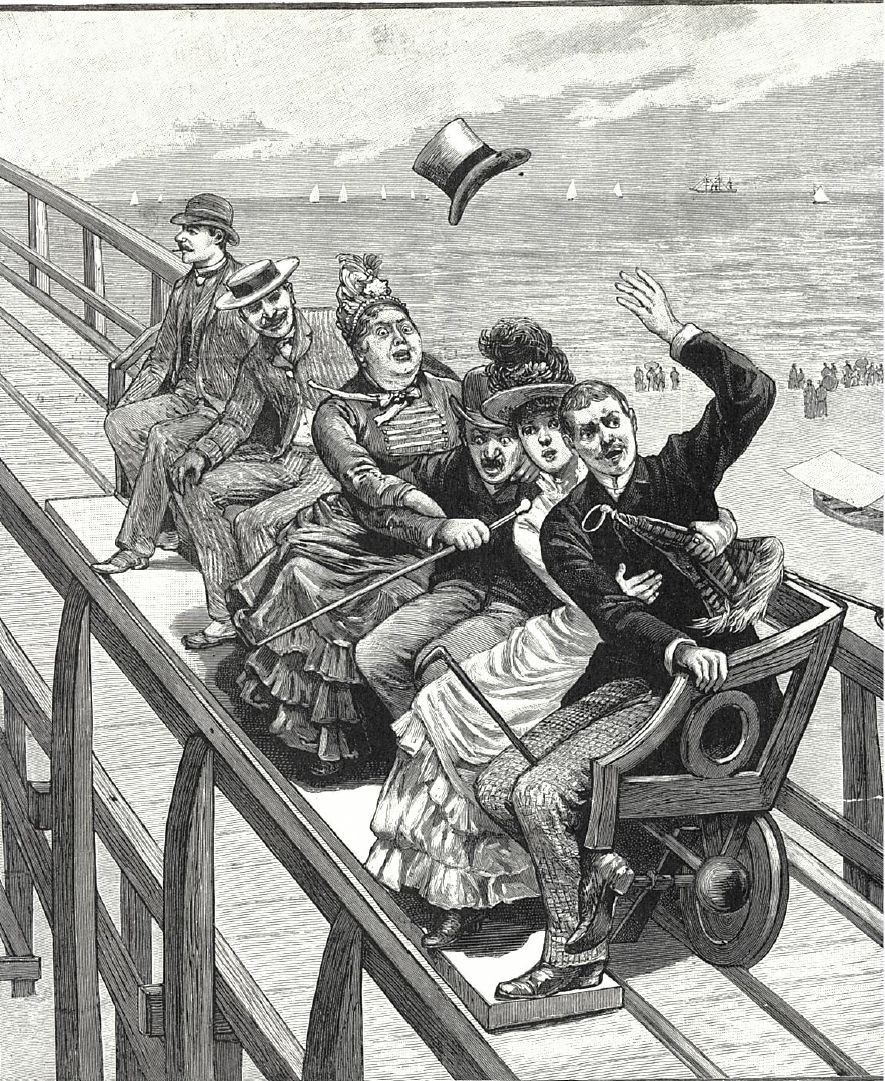
******************************************************************************************************************************** Brownstone Detectives investigates the history of our clients’ homes. The story you are about to read was composed from research conducted in the course of one of those investigations. Do you know the history of YOUR house? ******************************************************************************************************************************** When we research the history of our clients’ homes, we always come across the odd, the interesting, the unbelievable, and the ironic. Sometimes, though, we come across the FUN! In 1884, the original Coney Island thrill-ride was born – its first roller coaster – The Switchback Railway. No, it did not utilize a “90-degree vertical drop, followed by a 100-foot loop and a zero-gravity roll, along with dives, hills and a corkscrew — all within two minutes,” as the current Thunderbolt does. It did not reach speeds of 55 miles per hour. And it did not cost $10 million to build. The Switchback Railway, though, was the first roller coaster designed as an amusement ride in America. It was the coaster that sparked the first wave of the roller coaster mania in the United States. And it warranted LaMarcus Adna Thompson, the creator of the unprecedented coaster, the title “Father of Gravity.” Based upon a coal-mining train that had started carrying passengers as a thrill ride in 1827, to ride the Switchback set you back a mere 5 cents. Riders would climb a tower to board the large bench-like car and then were pushed off to coast 600 feet down the track to another tower. And its speed? Just over 6 […]
THE “GOODFELLAS” OF CUMBERLAND STREET
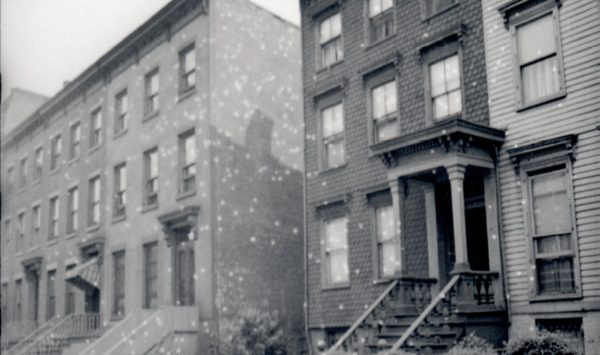
One of the Brownstone Detectives’ first House History Books, No. 231 Cumberland Street: The Story of a House, tells the story of an 1852 antebellum frame home just steps from Fort Greene Park. It’s an action-packed tome, replete with treachery, “poudrette,” “small art,” SROs, and the gangland figures from “Goodfellas.” Here is a brief timeline of the history of this single landmarked property, matched up with “spreads” from the book: THE HISTORY OF A BROOKLYN HOUSE The land beneath which No. 231 would someday rise, started out as a tobacco farm owned by the first Italian immigrant to New York, Pietre Cesare Alberti. The farmland would eventually be built upon in 1851-2, when builder John Ross constructed a row of three homes there. First owned by a woman with a tragic history, a melodrama involving treachery, another man, and an infant daughter – which became the gossip of the newspapers of the time – No. 231 was rented out throughout the the 1850s and 1860s, in addition to many returning Civil War veterans, to merchants and their small families. One of those merchants featured prominently in the founding of the Lafayette Avenue Presbytery Church. Before this, however, he had begun his interesting career as a Night Soil Man – starting a company which, amongst other “agricultural” endeavors, collected human excrement from the backyard privvies of Brooklyn, selling this “compost” to Long Island farmers as the appropriately – if euphemistically – named “poudrette.” The property was then owned by an immigrant, […]
MATTHEW FOGARTY’S LAST DRINK (1885)
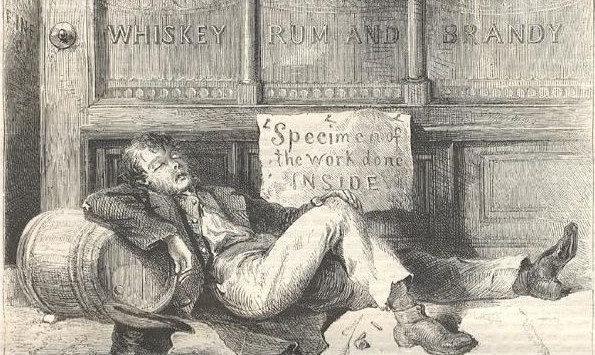
******************************************************************************************************************************** Brownstone Detectives investigates the history of our clients’ homes. The story you are about to read was composed from research conducted in the course of one of those investigations. Do you know the history of YOUR house? ******************************************************************************************************************************** For some, there is no better way to die than while asleep or drunk. For Matthew Fogarty, it was the latter. Leaving a saloon on the corner of Manhattan avenue and India Street on 31 September, 1885, a “Wednesday morning,” Fogarty “fell to the sidewalk and struck his head against a projecting stone, fracturing his skull.” And the papers back then were pretty blunt about the information and its presentation – the headline reads like the title of a poem or popular story. It is difficult to imagine such a piece being published in today’s papers – or a paper taking such a playful tone in the presentation of such a tragic event. But this was what sold back then and people loved to read it. Fogarty was taken to St. Catherine’s Hospital at the corner of Bushwick Avenue and Maujer Street, a distance of some two miles. Had the horse-drawn ambulance been waiting outside the saloon for Fogarty, and had it moved at a good clip of 15 miles per hour, it would have taken about 8-10 minutes for Fogarty to get help. It was likely, though, that it took some time for the ambulance to arrive, then calculating in the 10-minute trip to the hospital, and other factors such […]
THE “SCREAM” OF MACON STREET (1907)
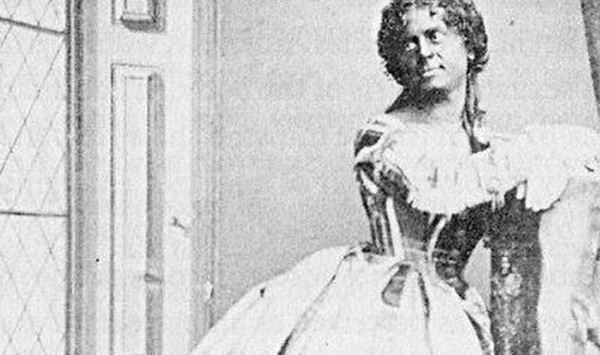
******************************************************************************************************************************** Brownstone Detectives investigates the history of our clients’ homes. The story you are about to read was composed from research conducted in the course of one of those investigations. Do you know the history of YOUR house? ******************************************************************************************************************************** Female “personators” seemed to bring out the passion in folks back in the day. Maybe there was less sexuality involved in the whole dressing-as-a-woman thing. Or maybe it was simply a matter of sexuality not mattering at all. Or, as some say, it was everything. But when “The Great Eugene” took the stage – and he took the stage always as a woman – men, in particular, seemed to find themselves singularly rapt in attention and admiration at the spell that the talented female personator was casting over them. BUILDING THE PERFECT IMPERSONATOR The Great Eugene, otherwise known simply as Eugene, was named Eugene D’ameli as a child. He was born on Manhattan in 1836, and, according to The New York Dramatic Mirror (the Broadway rag of the time), he made his first debut at the tender age of 17, playing what he would end up playing the rest of his career – a “prima donna” – a persona which “he improved and perfected until it was considered the best of its class.” His partner, “Johnny” Unsworth, of 700 Macon Street, recalled Eugene’s beginnings in the minstrel theatre. “Because he was so small and slight and built somewhat like a woman Gene started female impersonations, always in black face, as a […]
WHALE HUNTING AT THE NAVY YARD (1887)
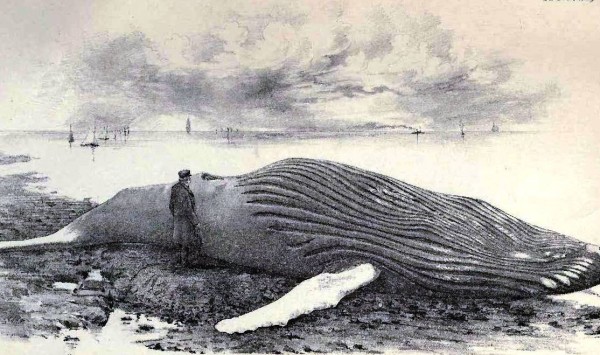
******************************************************************************************************************************** Brownstone Detectives investigates the history of our clients’ homes. The story you are about to read was composed from research conducted in the course of one of those investigations. Do you know the history of YOUR house? ******************************************************************************************************************************** When the Navy Yard sailors spotted the mass floating in the mill pond-like waters of the Wallabout Bay they could hardly believe their eyes. Never had anyone before seen a fish of this size enter the Navy Yard’s Whitney Basin, let alone a gargantuan the size of this whale. Old-timers had talked about the ones they’d hunted, going on about their supreme strength and how dangerous a prey they had been to hunt. Everyone watching braced themselves for the inevitable feats of strength it was preparing to perform. No noise nor movement, however, emitted from the beast. This whale’s attitude seemed to be comparable to the peaceful musings of a cat with a ball of yarn. “It was a big black whale forty feet long,” the papers noted, and it floated listlessly near the entry of the Whitney Basin. As a great crowd gathered to watch the monstrous fish, it was quickly decided to “man one of the old whale boats to capture the monster.” Many a Starbuck was born that day, as the sailors raced to prepare the rigging and launch their craft. But something was wrong – something just didn’t seem right with the beast. It was at that point an old sailor with “a keen olfactory organ caught […]
SNOWBALLS TO BULLETS IN BROOKLYN (1888)
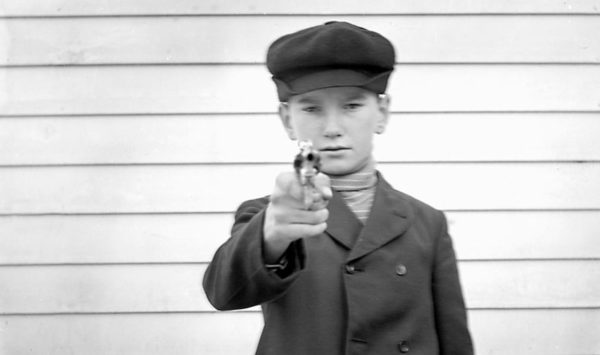
As the snow piled up during the Blizzard of 1888, Brooklynites began to experience countless fights. Snowball fights, that is. Most were lighthearted and fun, romps in the snow bringing joy and relief from the endless shoveling and the stress of everyday life with the white stuff. But sometimes these snowball fights turned ugly, exposing the more unsavory side of Brooklynites. They showed how quickly a snowball fight could evolve from a joyful game into mayhem-filled terror. Two cases, in particular, made the pages of the Brooklyn Daily Eagle during the week of the historic blizzard.Yesterday’s story involved a razor. Today’s involves a gun. THE GUN Seventeen-year-old James Fallon of Flatbush, Brooklyn, a “very quiet lad” who was working two jobs at the Hunter’s Point docks (as a plumbers’ apprentice and as a telegraph operator), fell in with a youth “of his own age,” one Joseph Woods, on the way to work two days after the Blizzard of ’88 struck. At the dock, the two boys noticed a “great pile of snow” – likely carted there by city contractors who were attempting to clear the streets. The two “for some time pelted each other with snowballs,” having great fun together. At one point, though, James managed to strike Joseph in the mouth with a snowball. This particular snowball “made him angry, whereupon he drew a revolver” and firing it at James, “struck him over the left eye.” James fell in the snow. Joseph ran away. THE TREK Most 17-year-old’s shot […]
BLOOD ON THE SNOWBALL (1888)
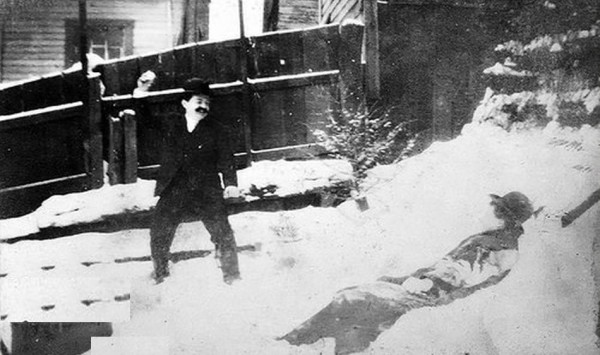
As the snow piled up during the Blizzard of 1888, Brooklynites began to experience countless fights. Snowball fights, that is. Most were lighthearted and fun, romps in the snow bringing joy and relief from the endless shoveling and the stress of everyday life with the white stuff. But sometimes these snowball fights turned ugly, exposing the more unsavory side of Brooklynites. They showed how quickly a snowball fight could evolve from a joyful game into mayhem-filled terror. Two cases, in particular, made the pages of the Brooklyn Daily Eagle during the week of the historic blizzard. One involved a razor. The second involved a gun. THE RAZOR The day after the “Great White Hurricane” struck Brooklyn, Vincent Ciemon was a very tired man. He had reason to be after a long day of shoveling snow following the first full day of the Blizzard of 1888. He had just been employed by the Long Island Railroad Company as that organization needed day laborers to help dig out their engines in the city and beyond. On his way home around 5 p.m., to the apartment where he lived with his family on East New York Avenue in Brownsville, Ciemon had just reached Rockaway Avenue “when a snowball struck him in the back.” Ciemon, identified by the Brooklyn Daily Eagle in the story as “The Italian,” had only a hundred or so feet before he arrived home and so, tired as he was, he did not even turn around to challenge his tormentors. […]